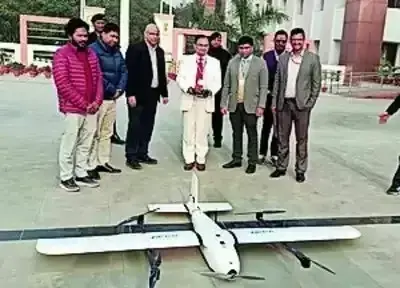AIIMS-Patna Successfully Tests Medicines Delivery by Drone, Revolutionizing Healthcare Access
In a groundbreaking move, the All India Institute of Medical Sciences-Patna (AIIMS-P) achieved a significant milestone by successfully flying a drone to deliver medicines to the primary health centre (PHC) in Naubatpur, located 12km away. This initiative, driven by the Union health ministry, aims to streamline and expedite medical supply chains, especially in challenging geographical and environmental conditions. AIIMS-P executive director, Dr G K Pal, revealed that the use of drones for medicine delivery is part of an ambitious plan by the Union health ministry. Following successful trials, a formal inauguration is expected in the coming days. Earlier attempts at drone demonstrations had been limited to the institute campus due to adverse weather conditions, but the recent drone flight to Naubatpur covered the distance in just eight minutes. Dr. Pal highlighted the significance of this achievement, stating, “The geographical and environmental conditions of Bihar often came in the way of fast delivery of health care by road or river ways to people living in hilly areas and diara or during adverse weather conditions like floods. Healthcare drones would prove to be a boon, especially in delivering life-saving medicines like anti-venom for snake bites, vaccines, and other emergency drugs.” The successful demonstration involved covering a distance of 24km, a journey that could take at least 30 minutes by road. The institute has requisitioned four drones for medical services, and the positive outcome of the recent test flight marks a significant step forward. For the drone service to be fully operational, the presence of medically trained individuals accompanied by technical experts is necessary at the receiving end. This innovative approach is poised to revolutionize healthcare access, particularly in areas where traditional modes of transportation face challenges.

